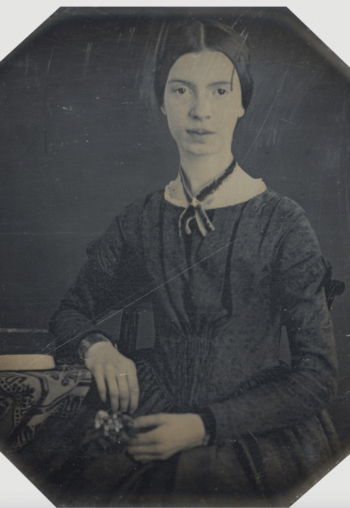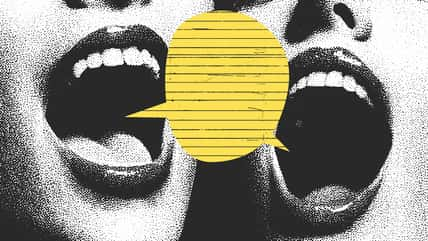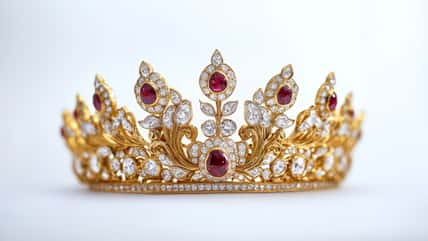She Was One Of America’s Most Influential Poets, And Although Only 10 Of Her Poems Were Published When She Was Alive, Her Family Discovered That She Had Written More Than 1,800 Poems

If you didn’t know, we just finished National Poetry Month in April! Did you get a chance to read any poetry? If not, now’s a good time to learn about one of America’s most influential poets, Emily Dickinson.
Emily was born in Amherst, Massachusetts, in 1830. She attended primary school as a young girl and eventually went to Amherst Academy. She was a bright student who loved her studies.
Emily had to grapple with the complexities of death at a young age, which heavily influenced her poetry later on. She was especially traumatized by the death of her second cousin, whom she was very close to, Sophia, from typhus in 1844.
She was grieving so heavily that her parents sent her to live with relatives in Boston to help her heal briefly.
When she returned home, she re-enrolled at Amherst Academy. After graduation, she briefly attended Mount Holyoke Female Seminary but eventually returned home due to homesickness and the institution’s strict rules.
As she got older, Emily became more different from her other family members. She had to take on a lot of domestic duties around her family’s home when she was in her 20s after her mother fell ill. However, she hated it and often wrote about not wanting to maintain a household.
Emily started writing at a young age but dove deep into poetry during her late teens. She wrote a lot in the 1850s and did some traveling around 1855. She went to Washington D.C. and Philadelphia to visit family before entering a long period of solitude at home in Amherst.
Emily became extremely reclusive and spent much of her time writing. She wrote bundles of verses and also studied botany on the side. Much of her work was centered around themes of nature, identity, mortality, and death.
Emily’s brother, William, married one of her closest friends and companions, Susan Gilbert, in 1856 and moved next door to their family home in Amherst. Emily and her sister Lavinia were their mother’s primary caregivers until she died in 1882.

Amherst College Archives & Special Collection – pictured above is Emily
Although she lived amongst family between the late 1850s and 1860s, Emily hardly shared any of her writing with them.
The only writing she shared were enthused letters she would write to a few colleagues like Samuel Bowles, the owner, and editor-in-chief of the Springfield Republican. Samuel published a few of Emily’s poems in the paper.
Although she preferred solitude, Emily did have her dog, Carlo, who was her famous companion and dear friend from 1849 to 1866.
Some scholars believe Emily may have suffered from conditions such as agoraphobia, anxiety, and depression, as she rarely left the house by the late 1860s.
Nevertheless, she continued to write, although by this time, things were more chaotic, and she stopped organizing her work.
By the mid-1870s, when Emily was in her 40s, many of her loved ones had passed. Carlo had died, and she never got another dog; her parents eventually passed away, and two of the friends she wrote letters to died within two years of each other.
Emily’s mental and physical health continued to decline after all of these losses, and although she continued to write, she became bed-bound in November of 1885. Several months later, she died of heart failure in May of 1886 at 55.
After her death, Emily’s family discovered 1,800 poems she had written in confinement. Only ten of her poems had actually been published while she was alive.
In 1890, her sister Lavinia published Emily’s first poetry collection four years after her death. Her work received much critical praise and financial success.
A full unedited compilation of Emily’s poetry, The Poems of Emily Dickinson, was published in 1955.
Today, she is known as one of the most influential poets of the 19th century and is a significant figure in American literature.
In addition, she is studied in schools across the country and has heavily influenced many successful artists beyond the literary world.
If you ever find yourself in Massachusetts, you can visit her home in Amherst, now known as the Emily Dickinson Museum.
If true crime defines your free time, this is for you: join Chip Chick’s True Crime Tribe
Here Are 3 Things You Can Use To Confirm That Your Mother Is A Narcissist
She Has A Hysterical Tip For How You Can Get Over Someone
Sign up for Chip Chick’s newsletter and get stories like this delivered to your inbox.
More About:Chicks We Love





